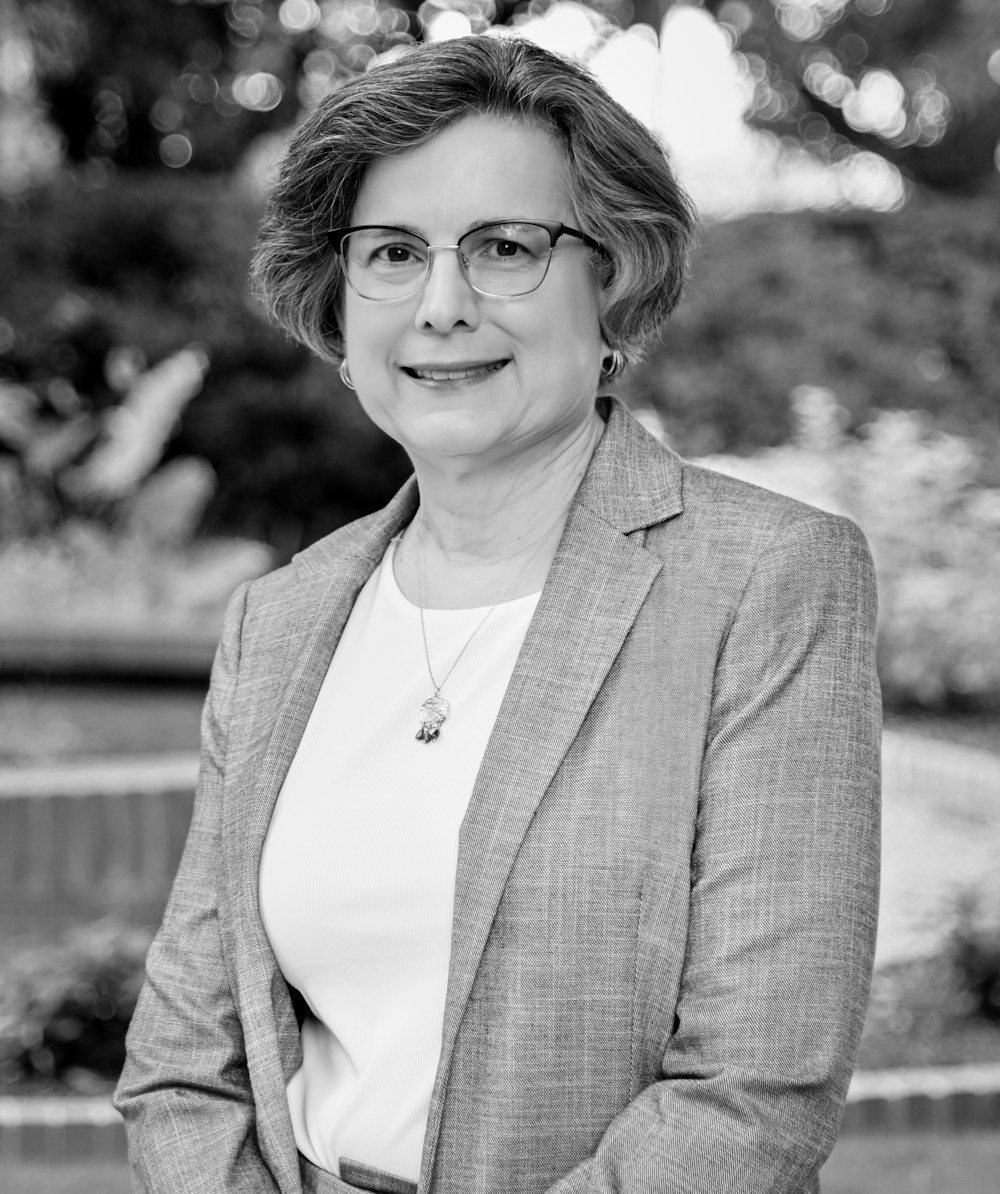
50 Careers for 50 Years
Fifty public health alumni reflect on their educational journeys and the impacts they’ve made across communities, countries, and the world.
August 21, 2025 | Erin Bluvas, bluvase@sc.edu
Cheryl Addy came to the Arnold School with a nearly complete Ph.D. in Biostatistics from Emory University, and she’s served USC ever since. It was 1988 when she joined the Department of Epidemiology and Biostatistics as its youngest biostatistician – a role that would evolve alongside the department over the years.
“I don’t know that I appreciated it at the time, but we were very much in a growth and development phase in terms of building and improving the curricula we had, recruiting students, and providing the quality of programs they wanted to pursue,” Addy says.
Originally called the Department of Public Health Measurement when it came into being just months after the School of Public Health (renamed for Norman J. Arnold in 2000) was founded in 1975, the department was first led by a director, Robert Lewis. Harold Lambert took over as chair in 1978, and one year later, with Julian Keil at the helm, the department name took on the final iteration that we know today.
The school and the department were still quite small (perhaps 50 faculty school-wide) when Addy arrived, seven years into Carol Macera’s decade-long tenure as chair. When Macera turned the role over to Carol Garrison in 1991, she went on to oversee the South Carolina Alzheimer’s Disease Registry (a first-of-its-kind database the Arnold School has stewarded for nearly 40 years) and serve as the first director of the CDC-funded USC Prevention Research Center.
Up until this point, the department was still developing its own research agenda. Biostatistics faculty like Addy were involved in numerous collaborative projects (though not necessarily leading independent research; this would change) and in high demand for teaching courses required in almost every program in the school and serving on student thesis committees to keep up with the continuous growth of the school.
Addy found a mentor in Garrison, who invited her to join one of the biggest research projects going on at the school – a study on adolescent depression – before the chair went on to assume higher-level administrative roles. The initial move was supposed to be temporary, so Garrison asked Addy (still the youngest in the department and newly tenured in that summer of 1993) to help her fulfill her chair duties. Garrison’s transition became permanent, and so Addy was appointed chair in 1994 (initially interim).

Addy was the first biostatistics faculty member to take on the chair position and the third consecutive woman to lead the department. Looking back, this was likely an intentional decision by Winona Vernberg – the dean at the time and widely praised for her strategic leadership in the formative years of the school.
Four years into the role, Addy’s leadership skills were called into service again when the newly appointed dean, Harris Pastides, asked her to oversee evaluation activities for an upcoming reaccreditation visit and lead the planning of the new Public Health Research Center as interim Assistant Dean for Administration. She left the chair role when “interim” was dropped from her title a year later.
The following two decades saw more and more school-level responsibilities fall under Addy’s purview as she ultimately rose to the Senior Associate Dean role that encompassed everything from faculty affairs and curriculum development to academic assessment/accreditation and student affairs. It was not a path she had foreseen for her career, but it proved to be an essential one for the school, which continued to experience tremendous growth and accompanying complexity during this time.
“I didn’t start my career with ambition to be a leader, but that’s what ended up happening,” Addy says. “The activities I was pulled into – such as evaluation – turned out to be a good fit for an analytic professor.”
She recalls Pastides’ deanship as transformational in terms of building research programs for the school and finding resources (e.g., new faculty start-up funds) to make them successful. Addy’s role within the school broadened even further under the leadership of Donna Richter, who served as dean from 2003 until 2007. Thomas Chandler, who took over as dean in 2007, was a visionary, Addy says.
Together, they undertook one of the most impactful initiatives of the school to date. Pastides and Richter had laid the groundwork for the development of public health bachelor’s programs (the B.S. in Exercise Science program had been around since the school’s inception). Addy and Chandler worked with long-time faculty Sara Corwin and Kara Montgomery to make it happen – beginning with eight students in 2008 and growing to 1,400 majors in 2025 with a total of 4,000 graduates over this 17-year period.

Corwin and Montgomery handled the execution of this major change – developing the curriculum and individual courses, recruiting and advising students, etc. Addy’s role was yet another new experience for her. In addition to the allocation of resources and operational requirements she was well versed in, she also had the challenge of implementing the cultural change needed to make the new programs thrive. Only exercise science faculty were accustomed to teaching and engaging with undergraduate students, and the five other departments were now being called to participate in a type of work that had not existed in the previous three decades of the school’s history. The rapid growth in the ensuing years presented its own administrative challenges that required ongoing planning and adaptation.
Meanwhile, the epidemiology and biostatistics department continued to make its own expansions in faculty, students and expertise. This included the development of additional programs under the leadership of James Hébert followed by John Vena then Robert McKeown and finally James Hussey, who all preceded the current chair, Anthony Alberg. Alberg arrived in 2017, just missing Addy, who left in 2016 to become Vice Provost and Dean of the Graduate School (2016-2020) and later Vice Provost and Dean of Faculty (2021-2023). In 2023, Addy returned to a chair position – this time with the new Department of Biobehavioral Health and Nursing Science in the College of Nursing, working with several Arnold School alumni and finding numerous strong collaborations with public health.
Over the years, Addy has been recognized with honors such as the Distinguished Service Award (American Statistical Association), Faculty Service Award (Arnold School of Public Health), Academic Award (ASA Statistics Section), and Michael H. Kutner Alumni Award for Distinguished Service to the Discipline (Emory University). As she looks back, it’s clear she has been part of an evolution for both a department and a school, which have grown to 45 and more than 350 faculty and staff, respectively. Hers is a trajectory few can claim but one that has been instrumental in the growth and success of both.
“When I joined USC, the Arnold School was a small school with big dreams; today it has a vibrant and growing faculty along with one of the most popular undergraduate programs and a top research portfolio for the entire campus,” Addy says. “Serving the school and supporting its growth over the years has been both a privilege and a pleasure for me.”

Fifty public health alumni reflect on their educational journeys and the impacts they’ve made across communities, countries, and the world.

Each month, we're telling the stories of alumni, faculty, and leaders whose unique perspectives shed light on the Arnold School across its five-decade history.

Join us as we celebrate the school’s 50th anniversary with guest speakers, symposia, feature stories, and anniversary events for students, alumni, faculty, staff and friends.